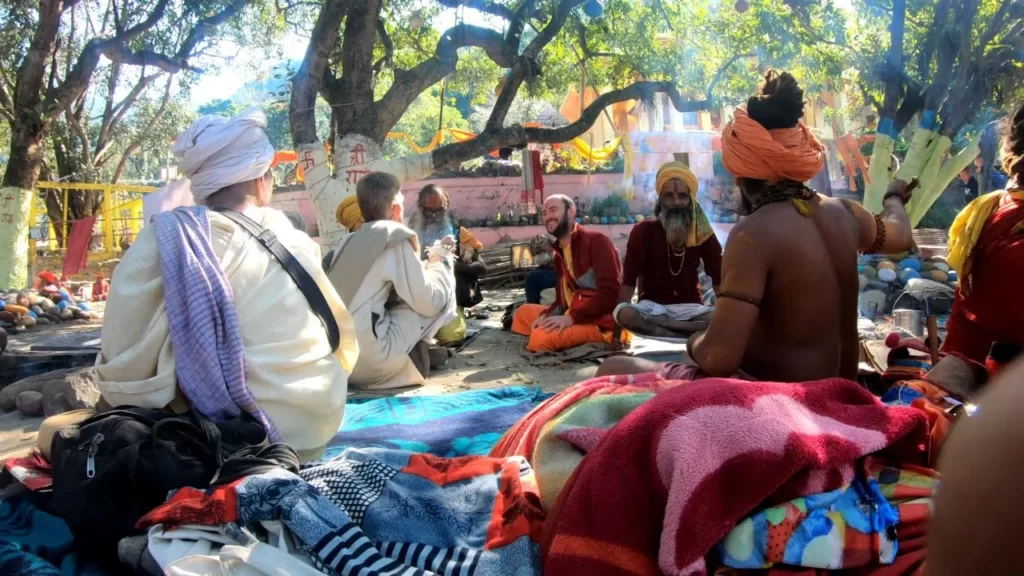The annual Malini Mela festival, spanning five days, kicked off this Thursday in Lower Siang district of Arunachal Pradesh, bordering Assam. Marking the beginning of a cultural celebration, the opening ceremony resonated with MLA Kardo Nyigyor’s appreciation for the efforts of the organising committee, ensuring the success of this grand event.
Nyigyor, while recognising the historical importance of Malinithan, also emphasised the festival’s economic significance for the residents of Lower Siang and neighbouring states.
Tourism Director KN Damo, in his speech, urged the community to preserve indigenous culture, traditions, and language while emphasising the need to foster the growing tourism sector by creating a welcoming environment for visitors. He also appealed to festival-goers to minimise plastic usage. The inaugural ceremony, graced by the presence of the state’s tourism director, KN Damo, and Lower Siang Deputy Commissioner, Rujjum Rakshap, featured a diverse assembly, including officers, organising committee members, PRI leaders, and other senior citizens.
The festival, locally referred to as Malini Mela, holds deep cultural significance for the residents of the shrine’s surroundings. On Makar Sankranti, thousands gather at Malinithan to perform worship rituals after a sacred bath in the nearby Akashi Ganga. Additionally, a grand fair takes place in the temple’s vicinity during the Basanti puja.
Read here: Thousands throng to Parshuram Kund and Malinithan to celebrate Makar Sankranti
Malinithan: A historical and pilgrimage hub
Known as ‘Malini-thaan’ or the ‘Abode of Malini,’ Malinithan stands as one of the oldest temples in India, boasting historical significance, archaeological richness, and pilgrimage allure in the North Eastern region.
Situated atop a 21-meter hill on the Siang mountain foothills and northern bank of Brahmaputra River in Lower Siang district’s Likabali, Malinithan offers a panoramic view of the surrounding plains, attracting thousands of devotees and tourists. The temple site is adorned with relics, temple ruins, and valuable sculptures, narrating the legendary love story between Lord Krishna and Princess Rukmini.
Throughout the excavation and restoration of the temple, a substantial collection of stone sculptures depicting Hindu deities was unearthed. Among the discoveries were depictions of Surya, Kartikam, Indra, Nandi bull, Raksah, Ganesh, as well as various animal motifs like bull, lion, and elephant. The revelation of up to four temple bases in and around the main temple base suggests that Malinithan is not a singular temple but rather a series of temples. Experts propose the possibility of it being a temple complex or a panchadev temple. Unfortunately, the absence of archaeological evidence or written records leaves unanswered questions about the builders, the construction date, and the eventual decline of the temple structures. It is speculated that natural calamities, such as earthquakes, may have contributed to the deterioration of the original constructions.

To enhance the tourist experience, the Arunachal Government has constructed a museum near Malinithan, housing archaeologically significant sculptures and artifacts. Recent renovations by the Government of Arunachal, coupled with the dedicated efforts of Malinithan Vikash Parishad members, underscore their commendable service in preserving this cultural gem.
Malinithan, akin to several other sacred sites in the North-Eastern region, is intricately woven into the stories of Lord Krishna. According to mythology, Krishna of Dwarka and Rukmini, King Bhismaka’s daughter, made a significant stop at Malinithan during their journey from Bhismaknagar in Arunachal Pradesh’s Roing district to Dwarka. Devotees subsequently named the place Malinithan. Legend has it that Lord Shiva and Parvati (Durga) welcomed Krishna and Rukmini as honored guests, presenting them with garlands. While it is not confirmed whether Krishna and Rukmini were married at Malinithan or Dwarka, the enchanting garland gifted to Krishna led him to call Parvati ‘Malini,’ possibly derived from the word ‘mali,’ meaning gardener.
The site gained its name, Malinithan, from Lord Krishna’s admiration for the flowers’ eternal fragrance. Impressed by the beauty of the garlands, Krishna addressed Parvati as ‘Sucharu Malini,’ signifying a lady who strings garlands gracefully. Thus, Malinithan carries the legacy of this enchanting episode in its name.

Parshuram Kund Festival calls pilgrims to Lohit District
Simultaneously, the Lohit district of Arunachal is gearing up for the Parshuram Kund Festival, where people from across the country gather to take a holy dip in the water body on Makar Sankranti. Scheduled between January 12 and 16, the festival preparations are in full swing, as confirmed by Lohit Deputy Commissioner Shashvat Saurabh during a press meet at Tezu, the district headquarters, on Monday.
The district administration has developed a dedicated website, parshuramkund.arunachal.gov.in, facilitating online registration and Inner Line Permit (ILP) issuance for pilgrims. Saurabh emphasised the convenience of online ILP availing in advance, reducing the last-minute rush during the Parshuram Kund Festival at Wakro.

The Parshuram Kund Festival holds cultural and religious significance, with Parshuram being revered as one of the incarnations of Lord Vishnu. As the stage is set for these dual celebrations, Arunachal Pradesh anticipates a vibrant showcase of its rich cultural and religious heritage.







